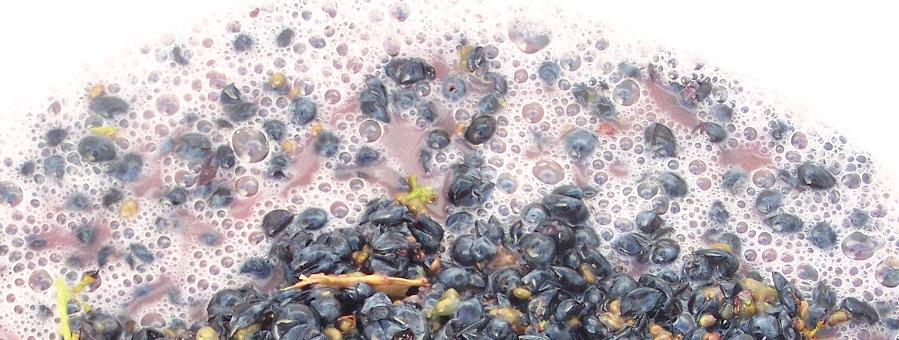
Though it’s widely assumed that the juice of red grapes is red, and that of white grapes runs clear, in fact, with rare exception, nearly all wine grapes express juice that is devoid of any color at all. So where does red wine come from? It results when dark-skinned grapes are crushed and their juice and solids are allowed time to fraternize. Gradually, the pigments, tannins and flavor compounds resident in the dusky epidermis infuse, and thereby enrich, the juice.
By contrast, white wines skip the crushing and infusion steps entirely. A gentle pressing of whole grapes liberates the juice which is quickly run off to ferment on its own. Whatever skins, pulp, pips and stems may have added in the way of flavor and texture is forgone in pursuit of the fashionably limpid, near-colorless appearance that is the current standard for white wines. In truth, there is no such thing as a white grape – even the palest display a spectrum of gray, pink, and yellow hues that, if allowed to make a contribution in the fermenting vat, would inevitably add color as well as flavor and aromatic interest. Winemakers are increasingly experimenting with just such a process. We call what results orange wines.
In light of the importance of skins in shaping the look, flavor, and feel of wine, it’s easy to overlook the important roles they play in advance of their hour in the vat. A grape’s wrapper, like our own skin, is multi-layered and serves a multitude of purposes. Its waxy surface effectively seals the interior off from invasion by molds, funguses and parasites, for example (basically, it’s the job of skin to keep what’s inside in and what’s outside out). It also serves as a vehicle to chauffeur wild yeasts into the cellar along with the fruit harvest where they help jumpstart fermentation.
Since any break in a grape’s skin is an invitation for rot to quickly set in, the most conscientious winemakers insist on harvesting by hand, rather than via the machines that inevitably damage some fruit. Broken berries not only require extra time at the sorting table, but pose a risk of infecting healthy ones.
Perhaps most importantly, an intact skin assures that fermentation cannot start while the fruit is still on the vine, as it surely would the moment yeasts succeeded in coming into contact with the grape sugars stored within.
All of which may help explain why some people are so passionate about wine. They’ve got skin in the game.
-Stephen Meuse
Taste, talk, was learn about wine this week in the FKC wine corner . . .
THURSDAY, FEBRUARY 28 3-6 PM – NEXT OF SKIN
2017 Laurent Cazottes, “Marcotte” Vin de France, $19.95
2017 Alberici “La Fogarina” Lambrusco dell’Emilia, $18.95
2015 Château Roland la Garde, Blaye Côtes de Bordeaux, $17.95
FRIDAY, MARCH 1 3-6 PM – DERM LIMITS
2015, Carlo Tanganelli, “Cibreo” Toscana Rosso, $22.95
2016 Carlo Tanganelli, “Pipirii” Toscana Bianco, $22.95